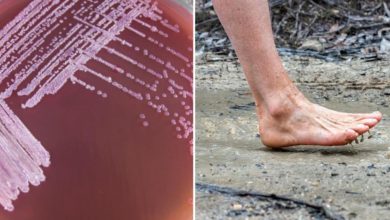Ice Baths: Miracle Cure or Just a Chilly Chuckle?
Ice baths have surged in popularity for muscle recovery and mental health benefits. But are they backed by science, or just another wellness fad with frostbite? Here’s the cold, hard evidence.

From Elite Athletes to Everyday Eskimo-Wannabes
You’ve probably seen it: some influencer hopping into a bin of freezing water, squealing like a galah and claiming it’s “life-changing.” But before you start turning your Bunnings esky into a DIY wellness spa, let’s talk science.
Once the domain of elite athletes and sadistic sports physios, ice baths (aka cold water immersion) are now as common in Bondi as green smoothies and overpriced yoga pants. But do they work?
Let’s break it down like a protein shake in a NutriBullet.
Do They Help Recovery? Yep — With a But
Research Summary: Ice baths can reduce muscle soreness and aid recovery — but only if used at the right times and not too often.
| Recovery Metric | Effect of Ice Baths |
|---|---|
| Muscle soreness (DOMS) | Significantly within 24–48 hrs |
| Inflammation | Helps with swelling and joint stress |
| Strength & Power Gains | May reduce long-term training gains |
| Aerobic Fitness | No major effect (use as needed) |
Key Takeaway: Great for short-term recovery. Not so good if you’re chasing long-term gains in strength and size. Like smashing a meat pie after leg day—satisfying, but maybe not optimal.
Ice Baths for Mental Health? Maybe, Mate
Social media would have you believe that plunging into icy water will cure anxiety, turn you into a stoic Viking, and give you the patience of a kindergarten teacher on red cordial duty. But what does the evidence say?
A systematic review found just 11 studies, many using cold showers instead of ice baths. Results were… well, a bit on the chilly side.
Potential (Small) Benefits:
- Reduced perceived stress
- Mild improvements in sleep
- Slight increase in reported quality of life
- Fewer sick days (maybe)
But before you ice yourself silly, note: these findings came from single studies and need more research.
Translation: The science is still thawing. Don’t throw out your therapist just yet.
Are There Risks? Absolutely, Ya Goose
Let’s not sugar-coat it (unless it’s for your lamingtons): cold shock is a real thing.
| Risk | Description |
|---|---|
| Cold shock | Gasping, hyperventilation, heart strain |
| Cardiac arrhythmia | Irregular heartbeat, rare but dangerous |
| Hypothermia | Risk after 30+ mins in icy water |
Real Talk: If you feel dizzy, numb, or like you’ve been whacked with a cricket bat, get out immediately. It’s a recovery method, not a Darwin Award application.
Top 5 Ice Bath Tips (So You Don’t End Up a Human Popsicle)
- 10–15°C is cold enough – you don’t need glacier water to be effective.
- Keep it short – 10–20 minutes is the sweet spot.
- Ease in slowly – the first 30 seconds are brutal. Don’t dive bomb.
- Monitor your body – Shivers = fine. Dizziness = not fine.
- Don’t overdo it – especially if you’re trying to build muscle or power.
Final Verdict: Worth It? Kinda. Just Don’t Be a Hero.
Ice baths aren’t total bunk—they’ve got real, evidence-based benefits, especially for recovery and maybe even mental wellness. But they’re not magic. And if you’re soaking in frozen misery daily hoping to become the next David Goggins, you might just be freezing your results.
Aussie Take: Great in moderation, useless in excess—just like beer and backyard cricket sledges.




